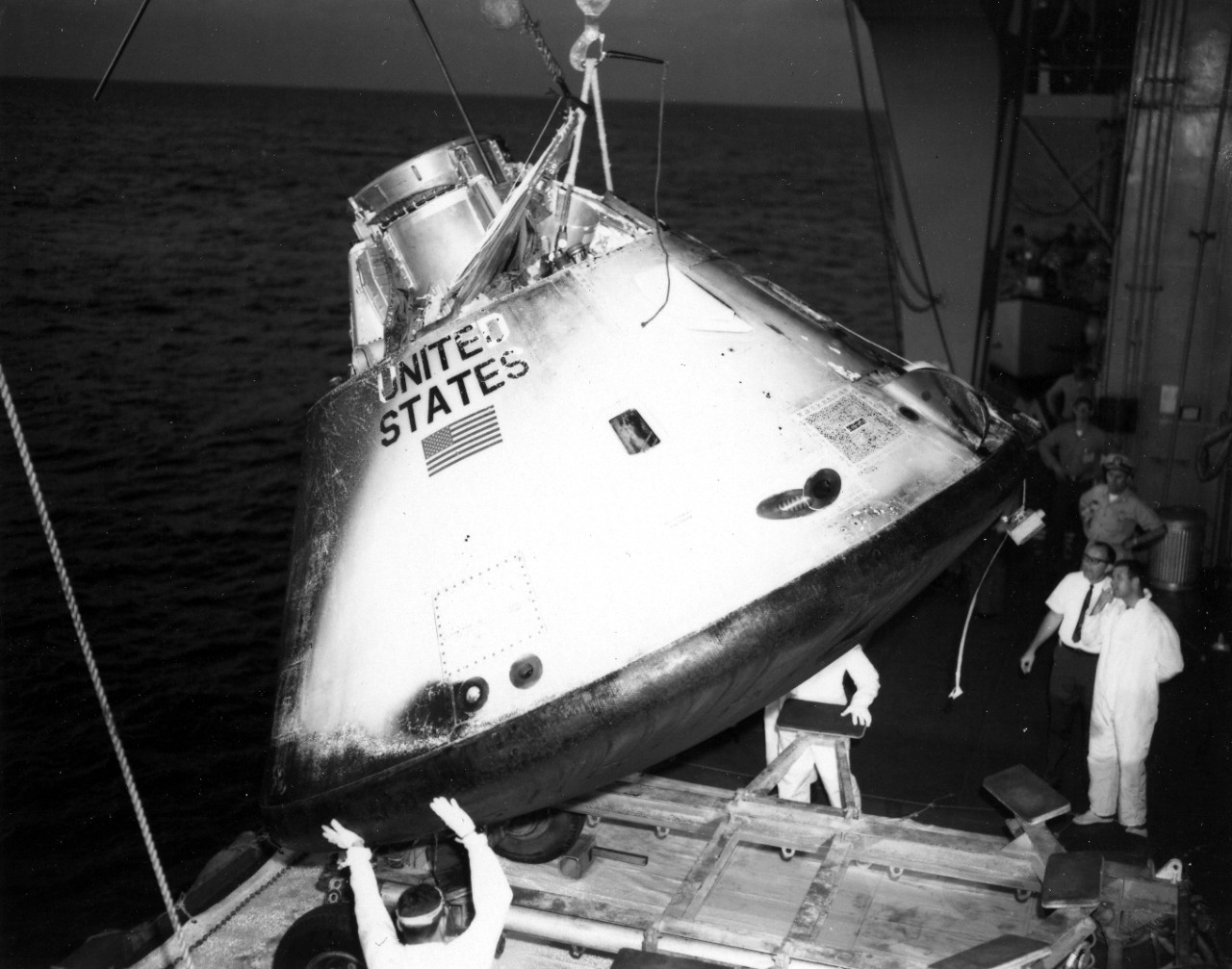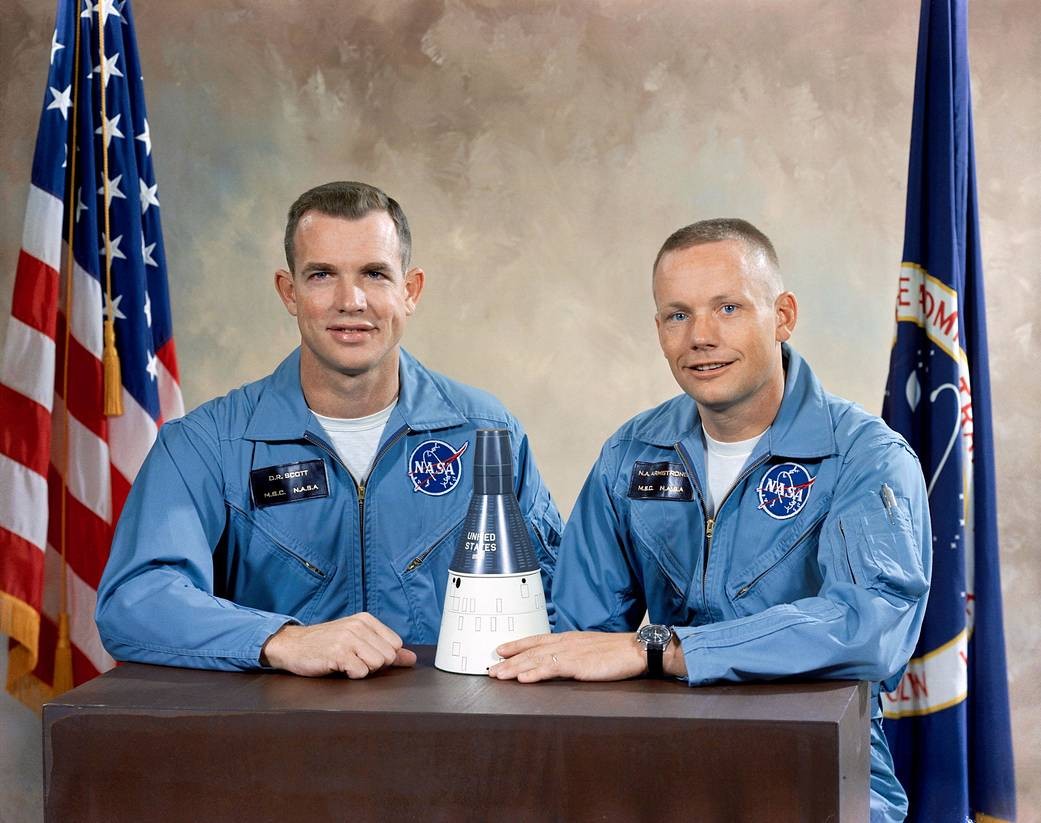Aurora 7 Mission
The launch of Aurora 7 (Mercury 7), piloted by Lieutenant Commander Malcolm Scott Carpenter, USN, took place on 24 May 1962. Aurora 7 was launched from an Atlas D launch vehicle. Carpenter completed 3 orbits in 4 hours, 56 minutes, at an altitude up to 166.8 statute miles at 17,549 mph.
Aurora 7 overshot the intended landing target by 250 nautical miles. An Air Rescue Service SA-16 amphibian aircraft established visual contact with the spacecraft 39 minutes after landing (13:20) and USS Farragut (DLG-6), located about 90 nautical miles southwest of the calculated landing position, was first to reach the capsule. Carpenter was picked up by HSS-2 helicopters dispatched from USS Intrepid (CVS-11), while Farragut watched the Aurora 7 capsule until it could be retrieved with special equipment aboard USS John R. Pierce (DD-753) about 6 hours later.
For more information on the Aurora 7 mission, visit the Mercury Atlas 7 NASA Mission Archives page.
USS Boxer (CV-21) the designated recovery ship for the Gemini 8 mission, during a test recovery operation. USS Leonard F. Mason was the ship that recovered the Gemini 8 command module after it was diverted to a secondary splashdown zone. (UA 539.18)
Astronauts David R. Scott (left), pilot; and, Neil A. Armstrong (right), command pilot, pose with model of the Gemini spacecraft after being selected as the crew for the Gemini VIII mission. (Image Credit: NASA)
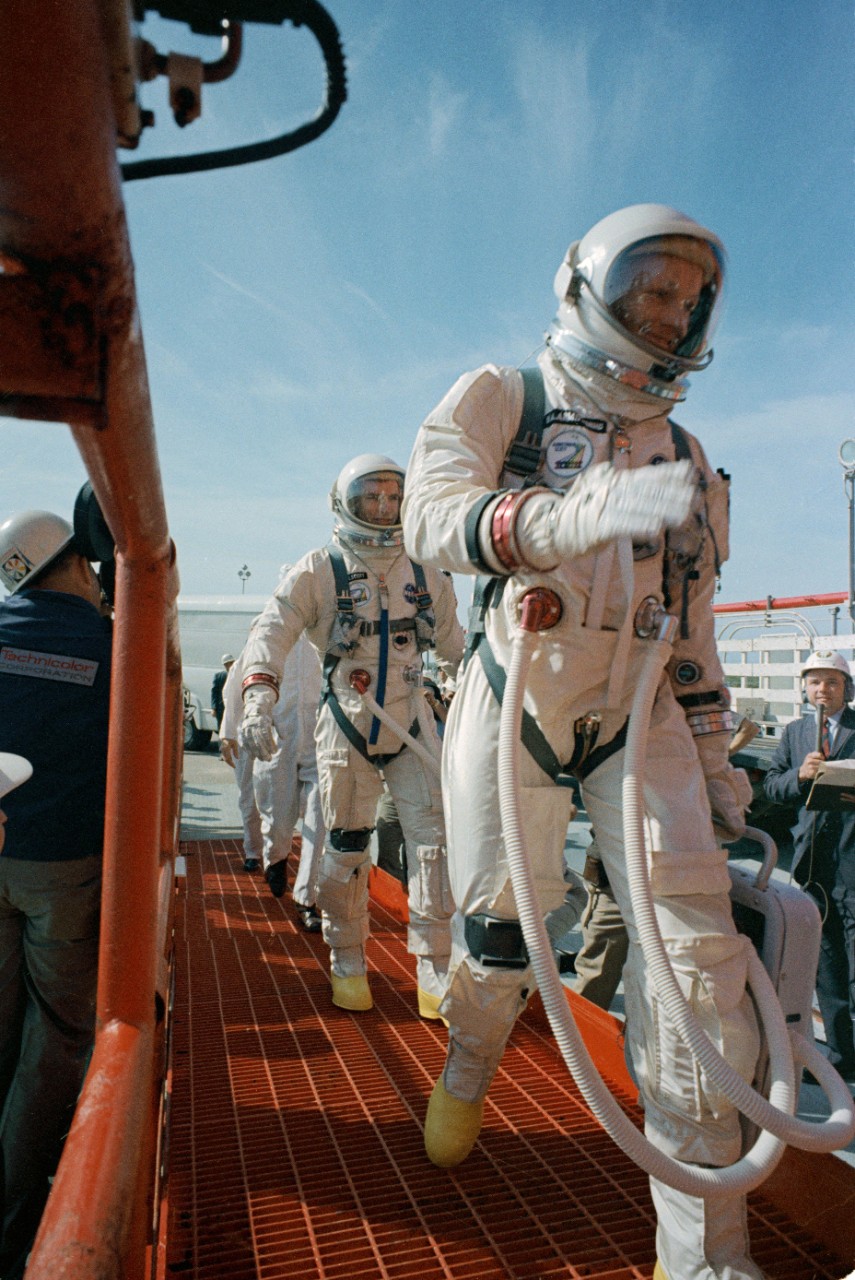
Commander Neil Armstrong (right) and pilot David R. Scott prepare to board the Gemini-Titan 8. Gemini 8 successfully launched at 11:41 a.m. EST, 16 March 1966. The mission conducted the first docking of two spacecraft in orbit and landed safely back on Earth after an emergency abort. (Image Credit: NASA)
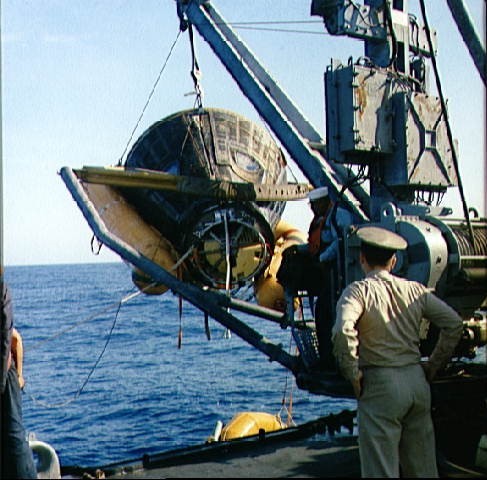
The Gemini 8 spacecraft, with astronauts Neil A. Armstrong and David R. Scott still aboard, is hoisted aboard the destroyer USS Leonard F. Mason. Trouble with the Gemini 8 Orbit Attitude and Maneuvering System (OAMS) forced an early termination of the mission. (NASA Photo ID: S66-18613)
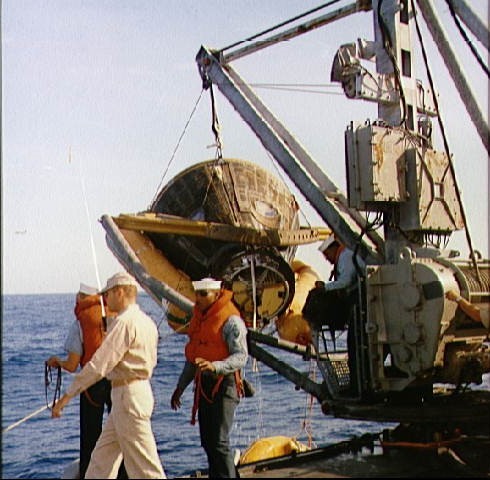
The Gemini 8 spacecraft, with astronauts Neil A. Armstrong and David R. Scott still aboard, is hoisted aboard the destroyer USS Leonard F. Mason. Trouble with the Gemini 8 Orbit Attitude and Maneuvering System (OAMS) forced an early termination of the mission. (NASA Photo ID: S66-26037)

The Gemini 8 spacecraft, with astronauts Neil A. Armstrong and David R. Scott still aboard, is hoisted aboard the destroyer USS Leonard F. Mason. Trouble with the Gemini 8 Orbit Attitude and Maneuvering System (OAMS) forced an early termination of the mission. (NASA Photo ID: S66-34101)

